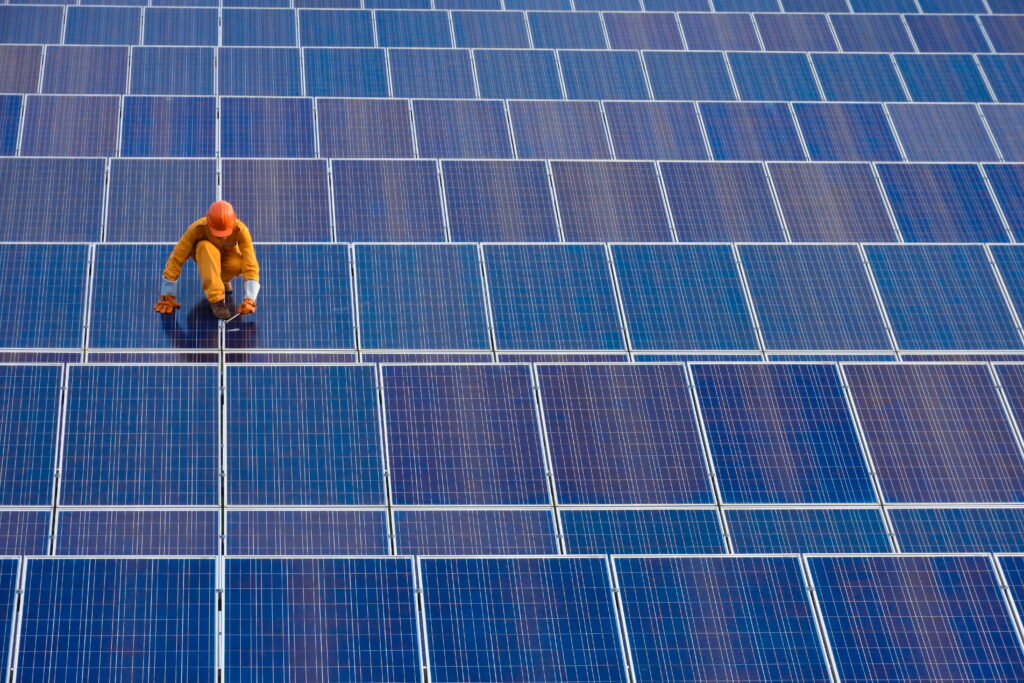Outlook: A year of transition for energy transition
Political and macroeconomic factors will have a significant impact on energy sector project finance and tax equity deal-flow in 2025.
Given the widely divergent energy policy preferences between the Biden administration and the second Trump administration, it should come as no surprise that political uncertainty is expected to weigh on activity in the energy sector.
Project finance and tax equity
Trump, on day one of his non-consecutive second term, put his preference for accommodative policy for fossil fuels over renewables into tangible policy terms with a series of executive orders on energy policy.
In the opening months of the incoming administration, developers and investors will be watching closely to see how campaign rhetoric translates to policymaking on energy, from promises of massive tariffs on imports to threats to undermine or eliminate core components of the Biden administration’s renewable energy policies, experts consulted for this piece told Infralogic.
Energy insiders will also be watching interest rates, which could be affected by Trump economic policies, particularly big tariffs promised by the President on major trading partners including Mexico and Canada, Matthew Shanahan managing director at Marathon Capital Partners said.
A more accommodative policy for fossil fuels, coupled with eye-popping demand projections in the coming years, is likely to drive project financing activity for conventional energy projects in 2025, including the exploration and production of fossil fuels, the development of LNG export facilities, and related transportation and storage facilities, natural gas-fired plants and nuclear power plants, experts said.
LNG project sponsors will look to capitalize on a more supportive federal government and growing global demand for the molecules, particularly from Europe, an attorney who worked on a number of high-level project finance deals in 2024 said.
Trump’s executive order directing the Secretary of Energy to restart the review of applications and approvals of LNG export projects, after a Biden administration permitting moratorium, will drive activity in the sector, the attorney added.
The positive turn in fortunes for conventional energy projects, though, is not expected to portend a corresponding decline in core renewables investment for near-term greenfield projects.
JPMorgan expects tax equity and tax credit transfer markets to see narrow to flat growth in 2025. But that stagnant activity level would maintain a total market size at around USD 40bn, significantly higher than in any year prior to 2024, Managing Director Rubiao Song and Bank of America Managing Director Jack Cargas said during a recent webinar hosted by Norton Rose Fulbright
A major exception, however, is offshore wind, which is expected to see activity for projects that weren’t fully permitted prior to Trump’s inauguration slow to a crawl, executives said.
In addition to the effects of political uncertainty, installations across core renewables will be held down somewhat by lagging factors related to supply chain and macroeconomic issues that pushed development timelines forward in 2023 and 2024, Shanahan said, adding that he expects to see a correlating acceleration in activity beginning in 2026.
Interest rates, which could be impacted by the incoming administration’s promises for import tariffs among other policies, will also affect project costs. If 2024’s downward trend in rates turns flat or even reverses, that could put upward pressure on project costs at a time when power markets have already absorbed significant increases, said Marathon’s Shanahan.
“Ultimately, on the power side it comes down to: will buyers still pay for renewable power? So far, they’ve been willing to. They’ve absorbed a lot of cost increase,” he said.
Pushing an agenda
Executives interviewed for this story said they expected core renewables to continue benefiting from the 2022 Inflation Reduction Act’s (IRA) renewable energy tax credits. However, day one executive orders restricting permitting for onshore wind have left many in the industry unsure to what extent this could have a knock-on effect on wind development and repowering on private lands in the short-term.
Investor interest in renewable energy projects may face some uncertainty in early 2025, pending further clarity on the details of the Trump administration’s energy policies, the project finance attorney said.
For example, another day one executive order from Trump stating that it is US policy to ensure that an abundant supply of reliable energy is readily accessible in every US state, is not clear on whether intermittent sources like solar and wind power are considered “reliable energy” for the purposes of the order, the project finance attorney said.
With so much in flux, it will take time for the market to adjust to changes in policy from the incoming Trump administration, the project finance attorney said.
The prevailing wisdom has long been that tax credits for core renewables are relatively safe under the new administration. But downstream effects on interest rates and supply chain reliability from GOP policies remain open questions.
Many in the industry will be watching closely for a major omnibus bill expected in mid- to late-spring including top GOP wish list items like tax cuts, immigration and border reform, energy, and permitting reform, and potential cuts to energy programs in order to pay for the legislation said Shanahan.
“Everyone’s waiting to find out what the tax regime’s going to look like in order to find out how this business is going to run,” Shanahan said.
With US electricity consumption projected by the US Energy Information Administration to grow by 2% in 2025, experts told Infralogic that this should serve as a tailwind across all energy sources, boosted by trends toward electrification, data center and AI expansion, and domestic manufacturing activity.
Multiple experts noted that the years-long lead times for the development of gas-fired plants and other fossil energy sources will make it difficult to keep pace with near-term demand growth without robust continued renewable energy expansion, meaning policymakers and investors alike will need to embrace an “all of the above” approach to energy in the coming years.
Citing the tremendous energy demands expected from an artificial intelligence sector that has been cheered by Trump, Shanahan said it is unlikely growth in the sector can meet expectations without continued growth in the renewables sector.
“The power that can get built soon is solar, wind and storage. So, you have to reconcile those different objectives,” Shanahan added.
Political, interest rate uncertainty to slow dealmaking
M&A activity, particularly in the renewable energy sector, has already slowed.
Deal activity could be further diminished if inflation continues to persist and interest rates remain high, several people spoken to for this article said.
“I know some people say you’re going to see a pickup in M&A activity. I agree with that if rates go down, but if rates persist at current levels, that may not pan out,” said Don Dimitrievich, a senior managing director and portfolio manager for energy infrastructure credit at Nuveen. “I’d say the market is probably a little more optimistic than I am personally on base rates and on M&A activity picking up.”
Add to that the prospect of president-elect Donald Trump imposing further tariffs on renewable equipment or repealing significant parts of the IRA, and the outlook for renewable energy M&A is even murkier.
“There were a lot of processes being considered for launch in Q1,” said Britta von Oesen, a partner and managing director at CRC-IB. “A lot of those, where it’s not a need to transact, are kind of pumping the brakes to see what the next 12 months looks like.”
M&A activity may be driven by the ongoing consolidation of platforms. Andrew Waranch, founder and CEO of Miami-based battery storage company Spearmint Energy, predicts a “massive wave of consolidation” as platforms launched in 2021 will face a moment of truth.
“A few years ago, if you had land and an idea of how to develop, that was all you needed to raise capital and get a company started,” he explained. “Now you need equipment procurement, EPC procurement, project management, physical operations, financing, tax equity financing, offtake agreements, you need seven or eight things.”
Some companies may scale up to become “soup-to-nuts” platforms, hiring some dozen or more people to fill all the roles needed to bring a project to completion. Others, Waranch said, may explore a sale of their company or pipeline, and some others will roll up other platforms.
Von Oesen expects capital for near-term projects to be available but mid-stage projects to face a tougher environment, as expenses like queue deposits have risen dramatically.
“Folks have developed these massive ‘bragawatt’ pipelines you hear about and now they have to start putting deposits down,” she said. “That’s a lot of capital.”
Firms that paid substantial premiums for platforms at the beginning of the decade will now have to decide whether to invest billions more into the platforms and pipelines or find another capital solution, Marathon Capital CEO Ted Brandt said.
“Our industry has never previously really had to deal with tight economics, need for scale and consolidation, the way other more mature industries have,” he added.
Dimitrievich also believes it is possible that a wave of stressed renewable development platforms seeking liquidity may hit the market.
“You can have a combination of uncertainty around Trump Administration policy, inflationary pressures, and continued project development delays,” he said. “And if you see labor cost issues still play out, that trifecta could cause some of these development platforms to seek consolidation as a form of survival.”
The outlook for conventional power is sunnier, both because of the new administration’s friendliness towards baseload sources of power generation and the need for baseload power driven by AI.
“It is unbelievable how much money is shifting into the gas generation business after being an unpopular place to invest for the last 15 years,” said Brandt. “The optimism about future power prices having to do with AI is significant, and there is just no question that that’s where a lot of focus, will shift and is going to go.”
Justin Stolte, global chair of Latham & Watkins’s energy and infrastructure group, expects a similar trend.
“We will likely see an uptick in natural gas transactions, whether it be upstream, midstream, or LNG,” Stolte said in an email. “This trend is expected for several reasons, including the renewed acceptance of natural gas as a cleaner energy source – particularly given the realities associated with the significant power needs that data centers will require for AI.”
Stolte says he also expects renewables and energy transition to be a robust area for investment despite the industry’s concern about the administration’s plans.
“While most industry players expect for there to be some changes in the IRA, complete overhauls are not anticipated,” said Stolte.










